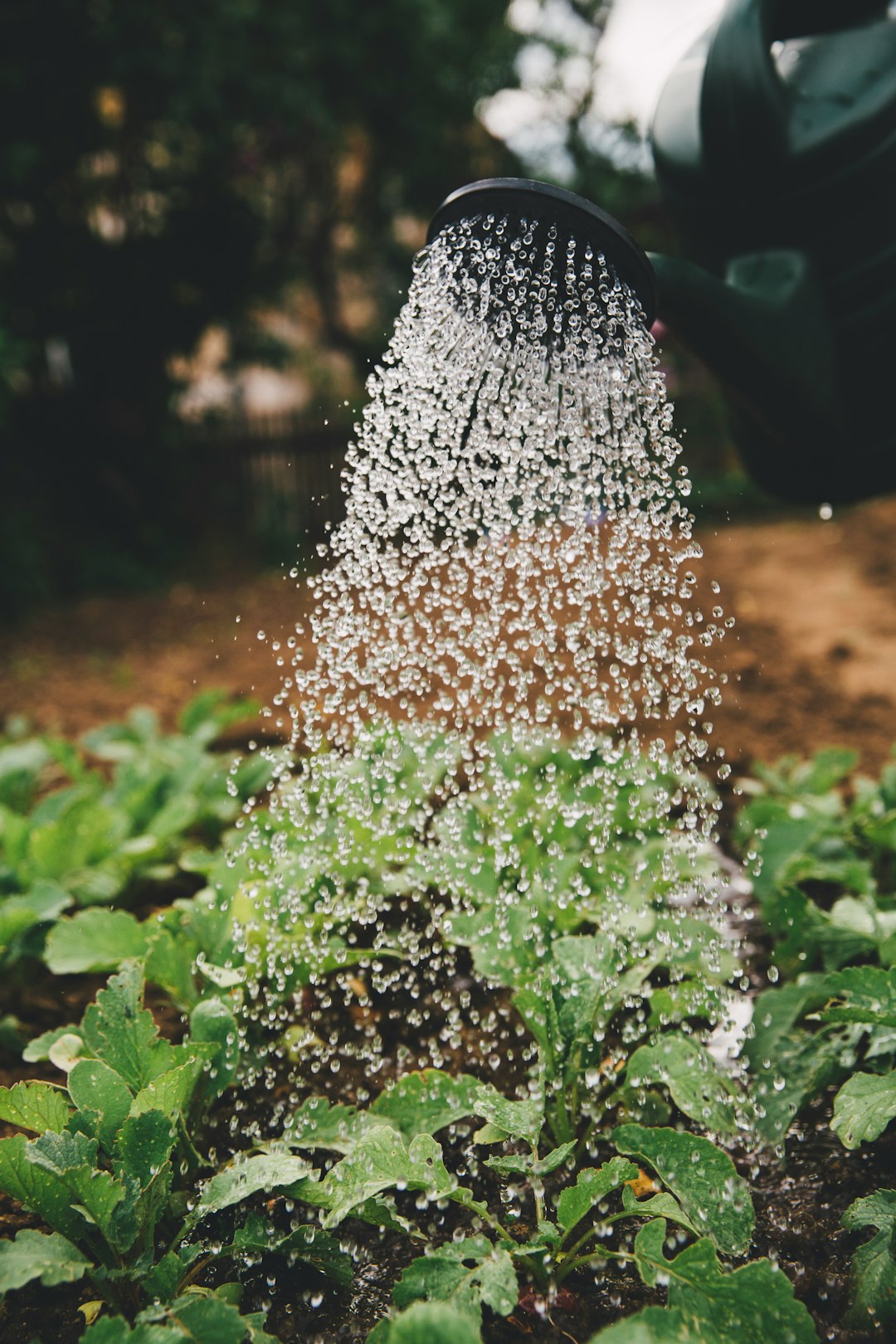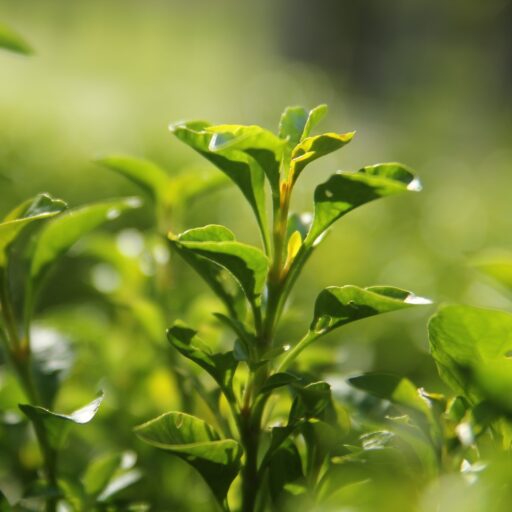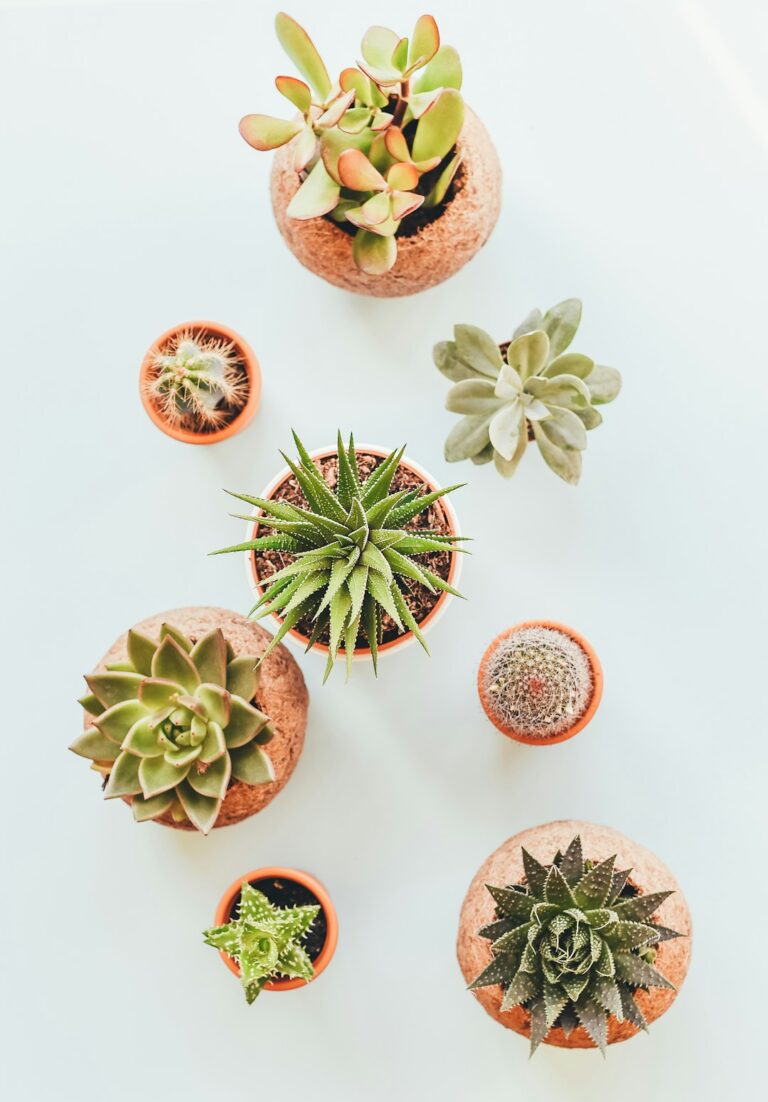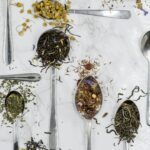Support our educational content for free when you purchase through links on our site. Learn more
Best Tea Varieties to Grow: 12 Must-Have Plants for Your Garden 🌿 (2025)
Imagine sipping a cup of tea brewed from leaves you nurtured yourself—fresh, fragrant, and bursting with flavor. At Growing Teas™, we’ve seen firsthand how cultivating your own tea plants transforms a simple garden into a sanctuary of taste and tradition. But with so many varieties out there, which ones truly thrive in home gardens? And how do you match the perfect tea plant to your climate and care routine?
In this ultimate guide, we reveal the 12 best tea varieties to grow in 2025, from the cold-hardy Camellia sinensis sinensis to the tropical powerhouse Assamica. We’ll walk you through everything—from soil secrets and propagation hacks to pest-fighting tips and creative garden designs. Plus, we’ll share insider processing techniques so you can craft your own signature brew. Ready to turn your backyard into a tea lover’s paradise? Let’s dive in! 🌱🍵
Key Takeaways
- 12 top tea varieties perfect for home cultivation, including Darjeeling, Yunnan, and Pu-erh.
- Climate matching is crucial: choose varieties suited to your temperature, humidity, and sunlight.
- Ideal growing conditions include acidic, well-drained soil, partial shade, and consistent moisture.
- Propagation methods like seeds, cuttings, and grafting explained for successful plant starts.
- Organic pest control and sustainable practices keep your tea garden healthy and eco-friendly.
- Harvesting and processing tips empower you to create your own fresh, flavorful teas.
Ready to get started? Check out trusted sources for seeds, tools, and organic fertilizers to set your tea garden up for success:
- Tea Plant Seeds & Seedlings: Amazon | Etsy
- Propagation Supplies: Rooting Hormone on Amazon | Fiskars Pruning Tools
- Organic Fertilizers: Espoma Organic Fertilizer
Dive deeper into the art of tea growing with Growing Teas™ and transform your garden into a living tea treasure!
Table of Contents
- Quick Tips and Facts About Growing Tea Varieties 🌱
- The Fascinating Origins and Evolution of Tea Plants 🍃
- 1. Top 12 Best Tea Varieties to Grow at Home 🌿
- 2. How to Choose the Right Tea Plant Variety for Your Climate 🌞❄️
- 3. Soil, Sunlight, and Water: Perfect Conditions for Tea Cultivation 💧☀️
- 4. Propagation Methods: Seeds, Cuttings, and Grafting Explained 🌱✂️
- 5. Common Pests and Diseases Affecting Tea Plants and How to Combat Them 🐛🛡️
- 6. Harvesting and Processing Your Homegrown Tea Leaves 🍵✨
- 7. Creative Tea Garden Design Ideas to Maximize Growth and Aesthetics 🌸🌿
- 8. Troubleshooting: Why Your Tea Plants Might Not Be Thriving ❌🌱
- 9. The Best Tools and Supplies for Growing Tea at Home 🛠️🍃
- 10. Sustainable and Organic Practices for Growing Healthy Tea Plants 🌍♻️
- Conclusion: Your Journey to Growing the Perfect Tea Garden ☕🌿
- Recommended Links for Tea Growing Enthusiasts 🔗
- Frequently Asked Questions About Growing Tea Plants ❓🍵
- Reference Links and Further Reading 📚
Quick Tips and Facts About Growing Tea Varieties 🌱
Did you know that all tea, from delicate white tea to robust black tea, originates from the same plant species, Camellia sinensis? 🤯 At Growing Teas™, we’re passionate about Cultivate Your Own Tea and helping you unlock the secrets of this ancient beverage. Here are some quick tips to get you started:
- Ideal Climate: Tea plants thrive in warm, humid climates, similar to their native regions of Southeast Asia. Think misty mountains and tropical rainforests! 🌧️
- Soil Matters: Well-drained, slightly acidic soil is key. Tea plants are picky about their pH levels! 🧪
- Sunlight Needs: While tea plants enjoy sunshine, they also appreciate some shade, especially in hotter climates. ☀️🌤️
- Regular Watering: Consistent moisture is crucial, but avoid waterlogged soil. Think of a gentle rain shower, not a downpour! 💧
- Patience is Key: It takes time for tea plants to mature and produce those flavorful leaves. But trust us, the wait is worth it! ⏳
The Fascinating Origins and Evolution of Tea Plants 🍃
Before we dive into the best tea varieties to grow at home, let’s take a trip back in time to explore the captivating History of Tea. Legend has it that tea was discovered in China over 5,000 years ago by Emperor Shen Nong. Whether it was a happy accident or a divine intervention, we’re eternally grateful! 🙏
From its humble beginnings in China, tea spread throughout Asia, eventually captivating the world with its diverse flavors and health benefits. Over centuries, different cultivation techniques and processing methods emerged, giving rise to the incredible variety of teas we enjoy today.
1. Top 12 Best Tea Varieties to Grow at Home 🌿
Ready to embark on your tea-growing adventure? Here at Growing Teas™, we’ve compiled a list of the top 12 tea plant varieties that thrive in home gardens:
- Camellia sinensis sinensis (China Type): Known for its smaller leaves and cold tolerance. Perfect for cooler climates! ❄️
- Camellia sinensis assamica (Assam Type): Native to Assam, India, this variety boasts larger leaves and thrives in tropical environments. 🌴
- Darjeeling Tea: Grown in the high altitudes of the Himalayas, Darjeeling tea is prized for its delicate floral aroma. 🏔️
- Yunnan Tea: Originating from Yunnan province in China, this variety produces teas with rich, complex flavors.
- Keemun Tea: Known for its unique orchid-like aroma and smooth, mellow flavor.
- Tieguanyin (Iron Goddess of Mercy): A highly prized oolong tea with a distinctive roasted aroma and a sweet, floral taste.
- Bai Hao Yinzhen (Silver Needle White Tea): Made from young tea buds covered in fine white hairs, this tea is renowned for its delicate sweetness.
- Da Hong Pao (Big Red Robe): A rare and highly sought-after oolong tea with a complex, roasted flavor profile.
- Pu-erh Tea: A fermented tea from Yunnan, China, known for its earthy aroma and unique aging process.
- Gyokuro (Jade Dew): A premium Japanese green tea grown in the shade for several weeks before harvest, resulting in a vibrant green color and a sweet, umami flavor.
- Matcha: A finely ground powder of specially grown and processed green tea leaves, whisked with hot water to create a frothy, energizing beverage.
- Rooibos Tea: Technically not a true tea, but a herbal infusion from South Africa, Rooibos is naturally sweet and caffeine-free.
2. How to Choose the Right Tea Plant Variety for Your Climate 🌞❄️
Selecting the right tea plant variety for your climate is crucial for successful cultivation. Consider these factors:
- Temperature Tolerance: Some varieties, like Camellia sinensis sinensis, can withstand cooler temperatures, while others, like Camellia sinensis assamica, prefer tropical climates.
- Sunlight Requirements: Most tea plants thrive in partial shade, but some varieties may tolerate more sun.
- Rainfall and Humidity: Tea plants generally prefer humid environments with consistent rainfall.
Pro Tip: Research the climate conditions of your chosen tea variety’s native region to ensure it aligns with your local climate.
3. Soil, Sunlight, and Water: Perfect Conditions for Tea Cultivation 💧☀️
Creating the ideal growing environment is essential for healthy tea plants:
Soil
- Well-Drained: Tea plants dislike soggy roots, so well-drained soil is crucial.
- Slightly Acidic pH: Aim for a pH range of 4.5 to 5.5. You can amend your soil with sulfur or peat moss to increase acidity.
- Rich in Organic Matter: Adding compost or well-rotted manure improves soil structure and provides essential nutrients.
Sunlight
- Partial Shade: Most tea plants prefer 4-6 hours of sunlight per day, with some shade during the hottest part of the day.
- Morning Sun: Morning sunlight is ideal as it’s gentler than the harsh afternoon sun.
Water
- Consistent Moisture: Keep the soil evenly moist but not waterlogged.
- Deep Watering: Water deeply and less frequently to encourage strong root development.
- Mulching: Applying a layer of mulch around the base of your tea plants helps retain moisture and suppress weeds.
4. Propagation Methods: Seeds, Cuttings, and Grafting Explained 🌱✂️
There are several ways to propagate tea plants:
Seeds
- Fresh Seeds are Key: Tea seeds have a short shelf life, so use fresh seeds for best results.
- Soaking and Stratification: Soaking the seeds in water for 24 hours and then cold-stratifying them in the refrigerator for a few weeks can improve germination rates.
Cuttings
- Semi-Hardwood Cuttings: Take cuttings from healthy, mature stems during the growing season.
- Rooting Hormone: Dipping the cut ends in rooting hormone can increase the chances of successful rooting.
Grafting
- Expert Technique: Grafting involves joining a cutting from a desirable tea variety onto the rootstock of a more vigorous variety.
- Benefits of Grafting: Grafting can enhance disease resistance, improve yield, and accelerate the time to harvest.
5. Common Pests and Diseases Affecting Tea Plants and How to Combat Them 🐛🛡️
Like all plants, tea plants are susceptible to pests and diseases. Here are some common culprits:
Pests
- Tea Mites: These tiny pests can cause leaf curling and stunted growth. Use insecticidal soap or neem oil to control infestations.
- Aphids: These sap-sucking insects can weaken plants. Spray with a strong jet of water or use insecticidal soap.
- Scale Insects: These armored pests can be difficult to control. Prune out infested branches or use horticultural oil.
Diseases
- Blister Blight: This fungal disease causes lesions on leaves. Remove infected leaves and improve air circulation.
- Root Rot: Caused by overwatering or poorly drained soil. Ensure proper drainage and avoid overwatering.
Prevention is Key: Maintaining healthy plants through proper care and sanitation practices is the best defense against pests and diseases.
6. Harvesting and Processing Your Homegrown Tea Leaves 🍵✨
The moment you’ve been waiting for! Harvesting and processing your own tea leaves is a rewarding experience.
Harvesting
- Timing is Everything: The ideal time to harvest tea leaves is in the early morning after the dew has dried.
- Plucking the “Flush”: Harvest the top two leaves and a bud, known as the “flush,” for the highest quality tea.
- Regular Harvesting: Regular harvesting encourages new growth and improves the flavor of your tea.
Processing
- Withering: Spread the harvested leaves in a single layer to wilt for several hours.
- Rolling: Gently roll the leaves to break down cell walls and release enzymes.
- Oxidation (for Black and Oolong Teas): Allow the leaves to oxidize for varying lengths of time, depending on the desired level of oxidation.
- Drying: Heat the leaves to stop oxidation and remove moisture.
Experiment with Different Processing Methods: Try different withering times, rolling techniques, and oxidation levels to create your own unique tea blends.
7. Creative Tea Garden Design Ideas to Maximize Growth and Aesthetics 🌸🌿
Designing a dedicated tea garden not only enhances your home’s curb appeal but also creates a tranquil space to relax and enjoy your homegrown tea.
Design Ideas
- Raised Beds: Raised beds provide excellent drainage and make it easier to control soil conditions.
- Terracing: If you have a sloped yard, terracing can create level planting areas and prevent soil erosion.
- Companion Planting: Plant beneficial companions like marigolds, nasturtiums, and chives to deter pests and attract pollinators.
- Water Features: A small pond or fountain adds a touch of serenity and attracts beneficial wildlife.
- Seating Area: Create a cozy seating area where you can relax and savor your freshly brewed tea.
8. Troubleshooting: Why Your Tea Plants Might Not Be Thriving ❌🌱
Even with the best intentions, tea plants can sometimes encounter problems. Here are some common issues and solutions:
Yellowing Leaves
- Nutrient Deficiency: Yellowing leaves can indicate a lack of nitrogen or iron. Amend the soil with a balanced fertilizer.
- Overwatering: Excess water can lead to root rot and yellowing leaves. Ensure proper drainage and avoid overwatering.
Leaf Drop
- Temperature Stress: Sudden temperature changes can cause leaf drop. Protect your tea plants from extreme heat or cold.
- Pest Infestations: Pests like spider mites can cause leaf drop. Inspect your plants regularly and treat infestations promptly.
Slow Growth
- Insufficient Light: Tea plants need adequate sunlight for growth. Ensure they are receiving at least 4 hours of sunlight per day.
- Compacted Soil: Compacted soil can restrict root growth. Aerate the soil around your tea plants to improve drainage and aeration.
9. The Best Tools and Supplies for Growing Tea at Home 🛠️🍃
Having the right tools and supplies on hand can make your tea-growing journey more enjoyable and successful.
Essential Tools
- Pruning Shears: Sharp pruning shears are essential for harvesting tea leaves and pruning your plants.
- Hand Trowel: A hand trowel is useful for transplanting seedlings, weeding, and incorporating fertilizer.
- Watering Can or Hose: A watering can with a fine rose or a soaker hose provides gentle watering for your tea plants.
Supplies
- Soil pH Tester: A soil pH tester helps you monitor and adjust the pH level of your soil.
- Organic Fertilizer: Use a balanced, organic fertilizer to provide your tea plants with essential nutrients.
- Mulch: Organic mulch, such as bark chips or shredded leaves, helps retain moisture, suppress weeds, and regulate soil temperature.
10. Sustainable and Organic Practices for Growing Healthy Tea Plants 🌍♻️
At Growing Teas™, we believe in sustainable and organic gardening practices that benefit both the environment and your health.
Organic Pest Control
- Neem Oil: Neem oil is a natural insecticide and fungicide that can help control a wide range of pests and diseases.
- Insecticidal Soap: Insecticidal soap is effective against soft-bodied insects like aphids and spider mites.
- Beneficial Insects: Attract beneficial insects like ladybugs and lacewings to your garden to naturally control pest populations.
Water Conservation
- Rain Barrels: Collect rainwater to irrigate your tea plants and reduce your reliance on municipal water.
- Drip Irrigation: Drip irrigation systems deliver water directly to the roots of your plants, minimizing water waste.
Soil Health
- Composting: Composting kitchen scraps and yard waste creates nutrient-rich compost to improve soil structure and fertility.
- Cover Crops: Planting cover crops during the off-season helps prevent soil erosion, improve soil structure, and add nutrients to the soil.
Conclusion: Your Journey to Growing the Perfect Tea Garden ☕🌿

Wow, what a journey we’ve been on together! From uncovering the rich history of tea plants to exploring the top 12 varieties you can grow at home, and diving deep into soil, climate, propagation, and pest management — you’re now well-equipped to cultivate your own thriving tea garden. 🌱
Here’s the bottom line: Whether you choose the cold-hardy Camellia sinensis sinensis or the tropical-loving Camellia sinensis assamica, success boils down to matching your plant to your environment, giving it the right soil, water, and love, and patiently nurturing it through the seasons. Remember, tea growing is a marathon, not a sprint — but the reward of sipping your own fresh brew? Absolutely priceless. 🍵✨
At Growing Teas™, we confidently recommend starting with varieties like Darjeeling or Yunnan if you’re in cooler climates, or Assam and Pu-erh if you’re in warmer zones. Don’t forget to experiment with processing techniques to craft your signature cup. And if you’re feeling adventurous, try blending your homegrown leaves with herbs from your garden for a unique twist! For more on blending, check out our DIY Tea Blending guides.
So, ready to roll up your sleeves and get planting? Your perfect tea garden awaits — and we’ll be cheering you on every step of the way! 🎉
Recommended Links for Tea Growing Enthusiasts 🔗
Ready to gear up? Here are some top products and resources we trust for your tea-growing adventure:
- Tea Plant Seeds & Seedlings:
- Propagation Supplies:
- Soil Testing Kits:
- Organic Fertilizers & Mulch:
- Books on Tea Cultivation:
- The Tea Book by Linda Gaylard — Amazon Link
- The Story of Tea: A Cultural History and Drinking Guide by Mary Lou Heiss & Robert J. Heiss — Amazon Link
Frequently Asked Questions About Growing Tea Plants ❓🍵
What are the easiest tea varieties to grow for beginners?
For beginners, Camellia sinensis sinensis is often the easiest due to its tolerance of cooler climates and smaller leaf size, which makes it less demanding. Varieties like Darjeeling and Yunnan also adapt well to home gardens. If you live in a warmer climate, Assamica types are robust and fast-growing. Starting with seedlings rather than seeds can also simplify the process.
How much space is required to grow different types of tea plants?
Tea plants can be grown in rows spaced 3 to 5 feet apart, allowing room for pruning and airflow. A single mature tea bush can spread 3 to 6 feet wide. For small spaces or container growing, dwarf cultivars or younger plants work well. Remember, tea plants can be pruned regularly to maintain manageable sizes, making them flexible for various garden sizes.
What is the best climate for growing tea plants at home?
Tea plants prefer temperate to subtropical climates with high humidity and well-distributed rainfall (40-100 inches annually). Ideal temperatures range between 60°F to 85°F (15°C to 29°C). The Chinese variety tolerates cooler climates and light frosts, while Assamica thrives in hot, humid tropical zones. Partial shade helps protect plants from harsh sun.
Can I grow tea plants in containers or indoor spaces?
✅ Absolutely! Tea plants can thrive in containers, especially if you live in colder zones. Use large pots (at least 12-15 gallons) with acidic, well-draining soil. Place containers in bright, indirect sunlight and maintain consistent moisture. Indoor growing requires good humidity and airflow; consider a humidifier or misting. Container plants may need more frequent watering and fertilizing.
What are the most disease-resistant tea varieties to grow?
While no variety is completely immune, Camellia sinensis sinensis tends to be more resistant to cold-related diseases and fungal infections like blister blight. Some Assamica cultivars bred for commercial plantations also show resistance to pests and diseases. Employing organic pest control and good cultural practices enhances disease resistance regardless of variety.
How long does it take for tea plants to mature and be ready for harvest?
Tea plants generally take 3 to 5 years to mature enough for their first meaningful harvest. Seed-grown plants may take longer (up to 7 years), while propagated cuttings or grafted plants can produce sooner. Regular pruning after the first harvest encourages bushier growth and higher yields in subsequent years.
What are the basic care requirements for tea plants to thrive in my garden?
- Water: Keep soil consistently moist but well-drained.
- Light: Provide 4-6 hours of morning sun with afternoon shade.
- Soil: Acidic (pH 4.5-5.5), rich in organic matter.
- Fertilizer: Use balanced organic fertilizer during growing season.
- Pruning: Regularly prune to encourage new growth and maintain shape.
- Pest Management: Monitor for mites, aphids, and scale; use organic controls.
- Mulching: Retains moisture and suppresses weeds.
Reference Links and Further Reading 📚
- Tea Plant Varieties and Cultivation — TeaSource: Beyond the Leaf
- Growing an Herbal Tea Garden — Chestnut Herbs
- How to Grow a Tea Garden (And 10 Herbs to Plant) — The Old Farmer’s Almanac
- Fiskars Pruning Tools
- Espoma Organic Fertilizer
- Traditional Medicinals Herbal Teas
- Yogi Tea Official
For more inspiration and expert advice, explore our Growing Teas™ categories:
Ready to start growing? Your perfect cup of tea is just a seedling away! ☕🌿


